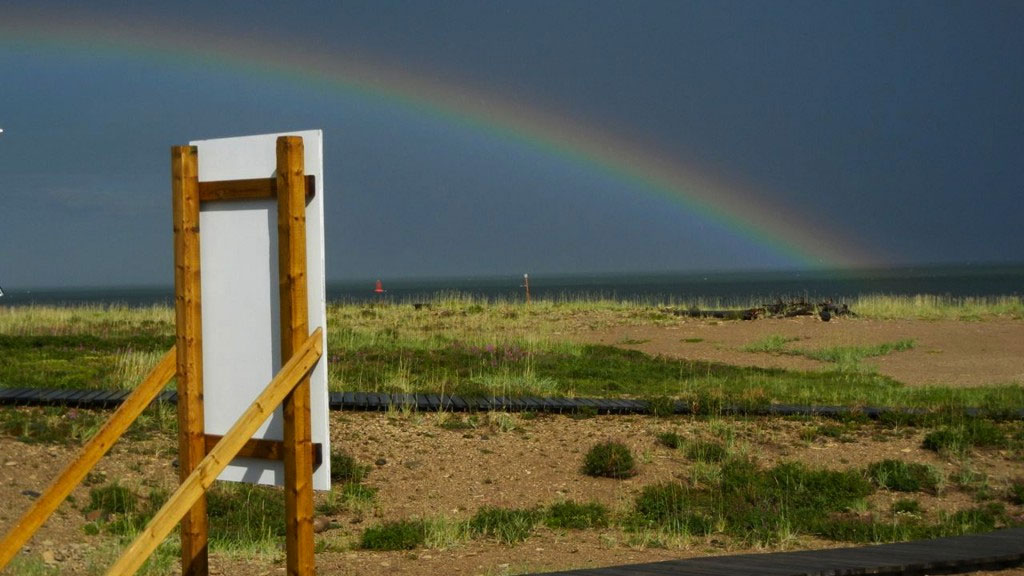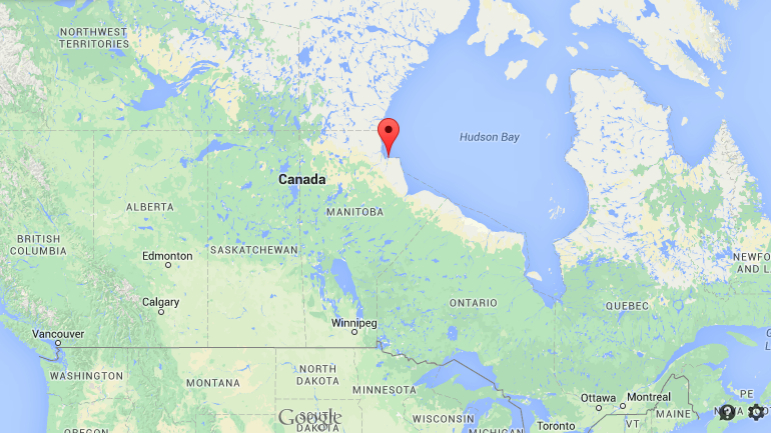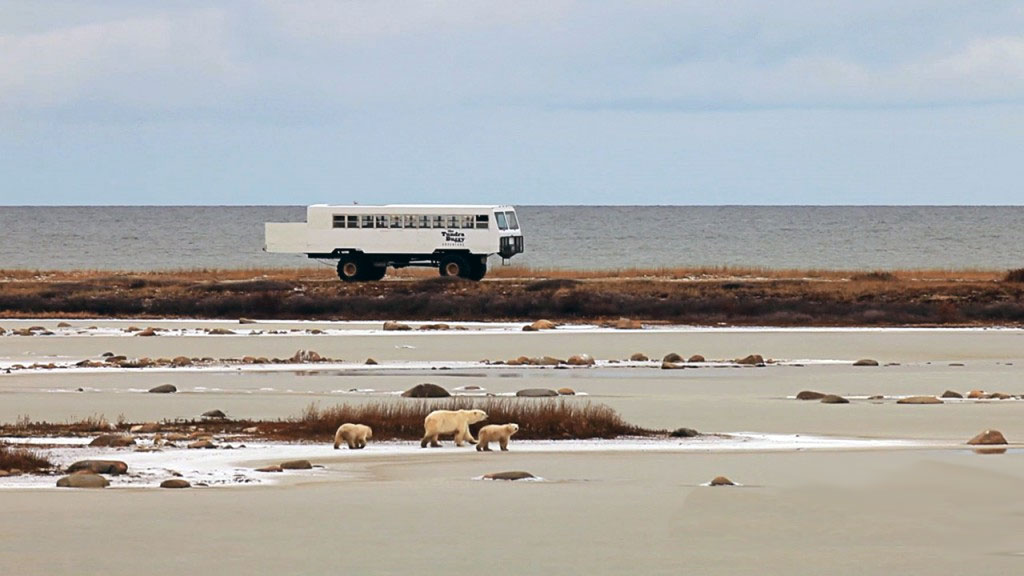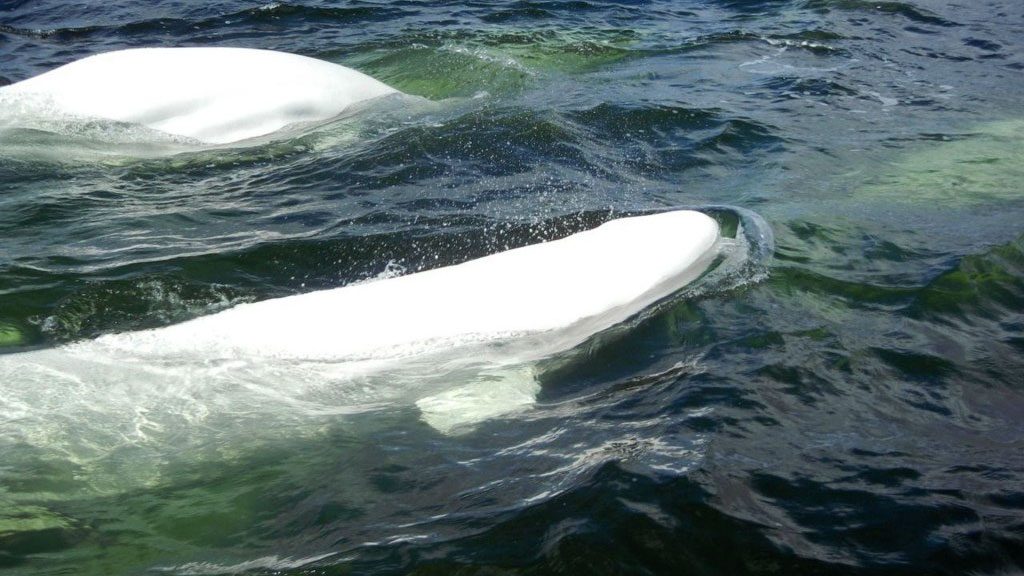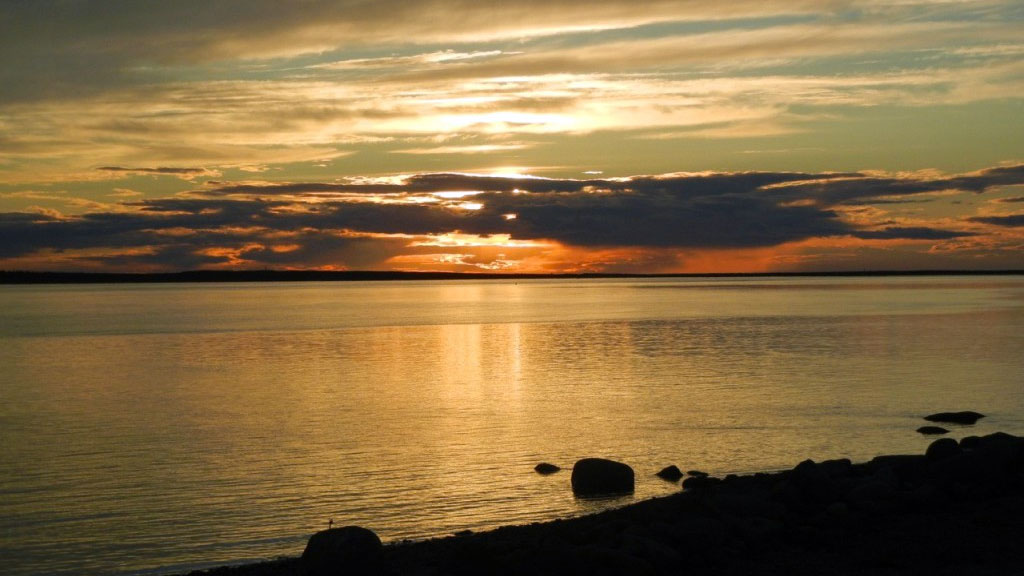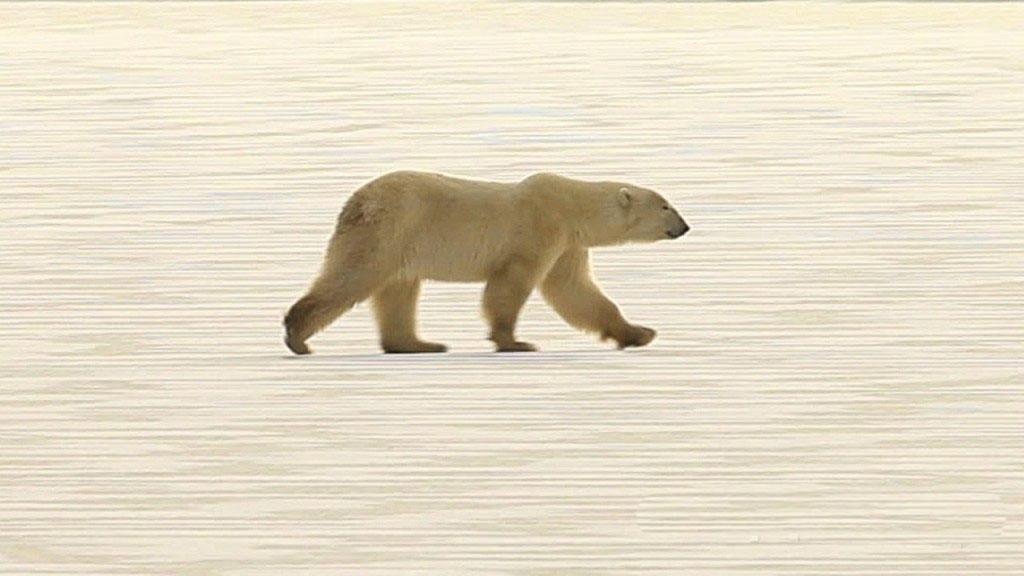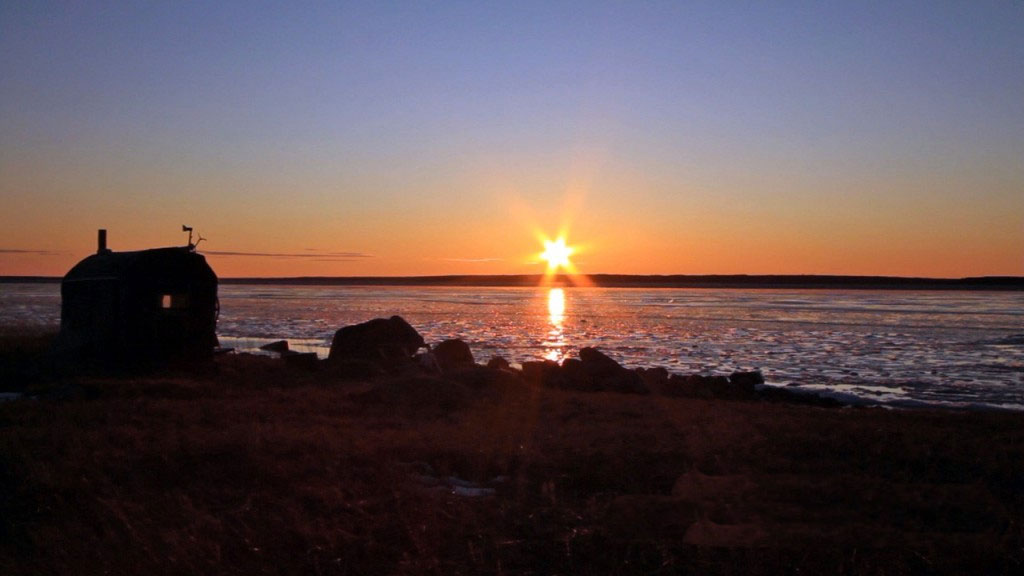If you’re already an avid follower of our Polar Bear, Beluga Sky (Northern Lights) or Underwater Beluga Whale Cams, then you’ve heard the name Churchill over and over again. But where exactly is it and what makes it such a hot spot for these amazing and threatened creatures?
On the western side of Hudson Bay and just southwest of the Northwest Passage is a little coastal town in Canada. The Northwest Passage, of course, was long sought after as a short-cut trade route for countries near the Arctic Circle. It could potentially allow places like Russia to have a direct route to Canada, Greenland or New York City without going south. Famously impassable, the Northwest Passage has now become more accessible as climate change melts the Arctic ice. This could be good news for shippers but is bad news for bears. More on that later.
Sustaining less life than other areas, Churchill has a strange moonscape, especially in the winter.
The Tundra Biome, in which Churchill sits, “is the coldest of all the biomes. Tundra comes from the Finnish word tunturia, meaning treeless plain. It is noted for its frost-molded landscapes, extremely low temperatures, little precipitation, poor nutrients, and short growing seasons. Dead organic material functions as a nutrient pool.” In the Arctic Tundra, “animals [like arctic foxes, wolves, and polar bears] are adapted to handle long, cold winters and to breed and raise young quickly in the summer. Animals such as mammals and birds also have additional insulation from fat…. The growing season ranges from 50 to 60 days. The average winter temperature is -34° C (-30° F), but the average summer temperature is 3-12° C (37-54° F) which enables this biome to sustain life,” (Berkeley).
Churchill is home to more than just birds and carnivorous bears. The human population of Churchill is less than 900 people. Fun fact though, bears outnumber humans in this region, making it the Polar Bear Capital of the World and leading to some pretty innovative laws and security measures. By the late 1980s, both the local government and Parks Canada had successfully educated its population on polar bear safety, significantly reducing lethal confrontations and fueling ecotourism in such a way that the community and the polar bears have benefited (Wiki). (Read about the Polar Bear Jail here.)
About half of the Churchill population is native made up of Chipewyan, Swampy Cree (33.85%), Métis (16.41%) and a small number of Inuit peoples. There are no roads connecting Churchill to the rest of Canada, so residents and tourists alike make their way via plane or train, and in Tundra Buggy when sightseeing!
Ecotourism has helped the town re-center its economic livelihood and brought precious information about polar bears to the scientific community, like our partners at Polar Bears International. Most notably, scientists are focused on the cross-section of polar bears and climate change. Polar bears are sort of the large, white canary in the coal mine since they have evolved for a life on the sea ice, which they rely on for reaching their seal prey. But the arctic sea ice is rapidly diminishing due to a warming Earth, affecting the entire arctic ecosystem, from copepods to seals to walruses. For polar bears, sea ice losses mean:
- Reduced access to food
- Drop in body condition
- Lower cub survival rates
- Increase in drowning
- Increase in cannibalism
- Loss of access to denning areas
- *Declining population size
The good news here is, because humans are causing this problem, humans can fix it. (Read more at PBI on the little things you can do to make a big difference.)
The Polar Bear Season begins now! PBI, Frontiers North Adventures and explore.org begin testing the cams this week. We will be live at any moment and look forward to our first spotting of a polar bear as well as many Live Expert Chats to teach us more on Churchill, the Tundra, Polar Bears, Belugas and what we can do about climate change.
Read more about what goes into creating live cams and technological outposts deep in the Tundra here. And find out what scenic visions you can catch 24 hours a day on our Churchill Live Cams. We are always excited to return to Churchill every winter and are grateful to the generous people of this magical town who welcome us back this week.
